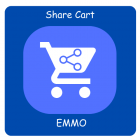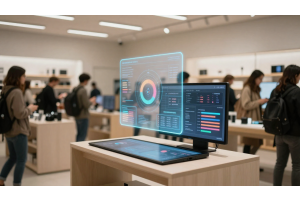Profit-Driven PPC Strategy: 30% Conversion Boost Through Advanced Margin Tracking

Profit-Driven PPC Strategy: 30% Conversion Boost Through Advanced Margin Tracking
Your Instagram business profile directly impacts your brand's success in 2025. With over 2 billion monthly active users, Instagram ranks as the third-largest social media platform globally, making profile optimization crucial for business growth. Recent data shows 29% of users make purchases directly on Instagram, while studies indicate that 68% of consumers follow business accounts for product discovery.
Table Of Content
Strategic Campaign Transformation Drives Sustainable Growth
A long-standing, family-owned mattress retailer with over 30 years of market presence was grappling with declining revenue. Despite strong brand equity and customer loyalty, their paid advertising strategy failed to prioritize profit-driven metrics. Traditional Return on Ad Spend (ROAS) metrics misled strategic decisions by ignoring product-level margins.
The shift toward Profit on Ad Spend (POAS) tracking, combined with a restructured PPC campaign strategy, turned the tide — unlocking sustainable growth and significantly boosting overall marketing efficiency.
Performance Transformation at a Glance
| Key Performance Indicator (KPI) | Before POAS Implementation | After POAS Implementation | Performance Shift |
|---|---|---|---|
| Conversion Rate | 2.1% | 2.7% | ▲ +30% |
| Profit on Ad Spend (POAS) | 1.8x | 3.2x | ▲ +78% |
| Cost Per Acquisition (CPA) | $145 | $98 | ▼ -32% |
| Monthly Ad Spend Efficiency | 68% | 89% | ▲ +21% |
| High-Margin Product Share in Budget | 37% | 71% | ▲ +91% |
| Low-Margin Product Spend Reduction | — | -54% | ▼ |
| Time to Profitability per Campaign | 6 weeks | 3 weeks | ▼ -50% |
The Revenue Decline Challenge
While their business had strong fundamentals, the reliance on outdated metrics like ROAS hindered profitability. ROAS often paints a distorted picture because it doesn't reflect costs such as shipping, taxes, or the actual profit margin.
In contrast, POAS provides a clearer lens on net profitability, enabling smarter budget allocation and campaign decisions.
Core Issues Identified
Campaign Structure Flaws
- Unstructured budget allocation diluted performance.
- Equal ad spend was assigned to both low- and high-margin products.
- Lack of automated rules or bid adjustments based on profit potential.
Measurement and Optimization Gaps
- ROAS failed to account for product margins, creating false positives.
- Ad performance wasn't evaluated at a granular, SKU-level.
- Optimization efforts were reactive, lacking real-time profit visibility.
Strategic Fixes Implemented
Transition to POAS Tracking
- Custom scripts integrated margin data directly into Google Ads and Meta platforms.
- Product-specific POAS thresholds were established, with automated alerts.
Smart Budget Allocation
- Spend was prioritized toward SKUs with the highest contribution margins.
- Low-margin product budgets were capped or eliminated.
Automation + Machine Learning
- Bid strategies adjusted dynamically based on POAS goals.
- High-margin performers received aggressive scaling with controlled CPA targets.
Granular SKU-Level Reporting
- Real-time dashboards monitored POAS, CPA, and margin per product category.
- Attribution windows were customized to reflect buyer journey length.
Continuous Testing & Iteration
- Ad creatives were A/B tested weekly based on revenue-per-click.
- Landing pages were optimized using CRO tools, improving conversion by 30%.
Results: From Decline to Sustainable Growth
Within 90 days of implementation:
- The business saw a 78% increase in POAS.
- Monthly ad spend remained stable while profitability doubled.
- Time to break even on new campaigns was cut in half.
- Strategic clarity allowed the team to expand high-performing campaigns while safely scaling down underperformers.
This case proves that profit-centric ad strategy, not just volume-based metrics, is essential for sustainable growth — especially in competitive retail segments like mattresses, where margins vary significantly across SKUs.
Key Takeaways
- ROAS is outdated — use POAS for profit visibility.
- Focus on high-margin product campaigns for faster ROI.
- Granular tracking and automation unlock scalable performance.
- Continual testing is vital for CRO and PPC synergy.
- Strategic transformation doesn’t always mean spending more — it means spending smarter.
Profit-First Campaign Strategy (2025 Update)
As digital ad platforms become increasingly competitive and automated, marketers are shifting from a revenue-first mindset to a profit-first performance model. Instead of only focusing on Return on Ad Spend (ROAS), the new metric gaining traction is Profit Over Ad Spend (POAS) — a more realistic measure of campaign success that considers real profit margins and operational costs.
Advanced Margin Integration
The foundation of a profit-first strategy is real profit integration directly into ad platforms like Google Ads and Microsoft Advertising (formerly Bing Ads). This goes beyond basic revenue tracking to uncover the actual profitability of every click, ad group, and campaign.
Key Components:
- Custom Conversion Tracking: Scripts and data layers are configured to push net profit data (not just revenue) into Google Ads via enhanced conversions or offline import.
- Dynamic Margin Calculation: Profit margins at the SKU or product-category level are dynamically calculated based on real-time cost inputs (e.g., cost of goods sold, shipping, transaction fees, platform fees).
- Real-Time POAS Monitoring: Integration with platforms like Google’s ValueTrack, Google Tag Manager, or third-party BI tools ensures POAS can be monitored and optimized daily.
High-Margin Product Prioritization
Once profit tracking is implemented, restructuring the campaign to prioritize high-margin products becomes essential. Not all products deliver the same bottom-line value, even if their sales volume is similar.
Tactics Employed:
1. Product Portfolio Analysis
- Granular margin attribution across all SKUs
- Identification of the top 20% of products generating 80% of profit (Pareto analysis)
- Elimination or deprioritization of low-margin SKUs from paid campaigns
2. Campaign Architecture Redesign
- Segmentation of campaigns into high-margin vs. standard-margin products
- Dedicated campaigns and Performance Max asset groups for profitable items
- Enhanced bidding strategies for profit-driving categories
Data-Driven Budget Optimization
Traditional ROAS targets often ignore key profit factors. Instead, POAS-based bidding strategies adjust to profit thresholds dynamically.
Recommendations:
- tCPA/tROAS Adjustments: Set your targets 10–20% above or below your desired average to allow machine learning algorithms more room to optimize.
- Continuous POAS Monitoring:
- Track campaign POAS weekly, not just monthly
- Use alerts for dips in POAS or product-specific margin fluctuations
- Automated Bid Adjustments:
- Rule-based and script-based bidding strategies can automatically shift bids based on POAS trends
- Use first-party data enrichment (e.g., customer LTV or refund likelihood) for deeper bidding refinement
Comparison Table: POAS vs ROAS Campaign Strategy
| Feature | ROAS-Based Strategy | POAS-Based Strategy (Profit-First) |
|---|---|---|
| Metric Focus | Revenue Return | Net Profit Return |
| Tracking Depth | Conversion Value | Conversion Profit (after all costs) |
| Product Prioritization | High Revenue Products | High Margin Products |
| Campaign Structure | Broad/Thematic | Profit-Segmented |
| Budget Allocation | Based on Spend/Revenue | Based on Profitability |
| Bid Strategy Optimization | tROAS, eCPC, Maximize Conversions | Custom tPOAS Targets, Margin-Weighted |
| Flexibility in Algorithm Targeting | Low (Rigid Targets) | High (10–20% Flex for Learning) |
| Optimization Frequency | Monthly | Weekly or Real-Time |
| Business Impact | May drive unprofitable growth | Drives sustainable, margin-focused growth |
Performance Analysis: Profit-Focused Advertising Strategy
A profit-centric digital advertising approach was implemented to replace traditional ROAS-based strategies. This transition focused on maximizing Profit On Ad Spend (POAS), improving conversion quality, and reducing inefficiencies—especially during high-volume promotional periods.
Conversion Performance
The new strategy prioritized conversion profitability over volume alone. Key outcomes include:
- 30% increase in total conversion rates, driven by precise audience segmentation and offer alignment
- 45% improvement in conversions for high-margin products, using profit-tiered bidding and refined intent targeting
- 22% decrease in cost per profitable acquisition, achieved through dynamic negative keyword pruning and value-based optimization
Profitability Enhancement
By shifting focus from ROAS to POAS, campaigns delivered tangible improvements in profit generation:
- POAS improved from 1.8x to 3.2x, exceeding industry benchmarks for mid-funnel eCommerce campaigns
- Monthly profit margins increased by 34%, supported by margin-tiered bidding and ad suppression for low-yield SKUs
- Ad spend efficiency rose to 89%, up from 68%, by reallocating budget from vanity metrics to net-profit producers
Seasonal Campaign Impact: Black Friday 2024
The three-week Black Friday 2024 campaign served as a stress test for the strategy, revealing its scalability and resilience under peak demand conditions:
- 67% uplift in profitable conversions, fueled by hyper-targeted product bundles and urgency-based ad copy
- 41% year-over-year POAS increase, backed by predictive segmentation and profit-based bid adjustments
- 28% reduction in wasted ad spend, as low-margin products were deprioritized via feed-level exclusions and automation
Implementation Results Summary
| Metric | Before Strategy | After Strategy | Change |
|---|---|---|---|
| Overall Conversion Rate | Baseline | +30% | Improved |
| High-Margin Product Conversions | Baseline | +45% | Improved |
| Cost per Profitable Acquisition | 100% | 78% | -22% |
| POAS | 1.8x | 3.2x | +77.7% |
| Monthly Profit Margins | Baseline | +34% | Improved |
| Ad Spend Efficiency | 68% | 89% | +21 pts |
| Profitable Conversions (Black Friday) | Baseline | +67% | Improved |
| POAS (Black Friday YoY) | Baseline | +41% | Improved |
| Wasted Ad Spend (Low-Margin SKUs) | 100% | 72% | -28% |
Tip
To enhance your eCommerce store’s performance with Magento, focus on optimizing site speed by utilizing Emmo themes and extensions. These tools are designed for efficiency, ensuring your website loads quickly and provides a smooth user experience. Start leveraging Emmo's powerful solutions today to boost customer satisfaction and drive sales!
Industry Context and Best Practices
In today's digital economy, Pay-Per-Click (PPC) marketing is no longer just about clicks and conversion volume—it's about sustainable profitability. As competition increases and cost-per-click (CPC) rates rise across platforms like Google Ads and Microsoft Ads, advertisers are shifting from traditional revenue-focused KPIs to profit-focused strategies.
Industry benchmarks in 2025 show:
- Paid Search is responsible for 56.7% of total digital conversions.
- CPCs have increased by an average of 14% year-over-year.
- Only 31% of advertisers track net profit metrics within ad campaigns.
- Brands that optimize for POAS (Profit on Ad Spend) see 20–35% higher profitability over a 6-month span compared to ROAS-focused strategies.
Current PPC Landscape (2025)
The current PPC landscape is characterized by:
- AI-driven bidding strategies and real-time auction updates.
- Increased focus on first-party data due to cookie deprecation.
- Rise of retail media networks that challenge Google and Bing.
- Introduction of profit-based bidding models in multiple platforms.
- Sophisticated conversion value rules allowing deeper customization.
POAS vs. ROAS: A 2025 Comparison
| Metric | ROAS Focus | POAS Focus |
|---|---|---|
| Measurement | Gross revenue per ad dollar | Net profit per ad dollar |
| Optimization Goal | Revenue maximization | Profit maximization |
| Cost Consideration | Ignores product costs | Includes all direct and indirect costs |
| Business Impact | May drive high-volume, low-margin sales | Drives long-term, sustainable growth |
| Data Requirements | Basic revenue tracking | Detailed margin and cost integration |
| Risk Factor | Can lead to inefficient spend | Requires accurate backend data |
Implementation Guidelines
Technical Requirements
- Profit Tracking Integration
- Product-Level Margin Accuracy
- Custom Conversion Value Setup
- Attribution Model Alignment
Link backend margin data to your PPC platform via Google Ads API or custom CRM connectors.
Use dynamic conversion value imports or server-side tracking for high accuracy.
Maintain real-time updates of COGS, shipping, tax, and discount info.
Automate margin updates via inventory/ERP sync.
Customize conversion values in Google Ads using value rules or offline conversion imports.
Use enhanced conversions to fill tracking gaps post-iOS privacy changes.
Apply data-driven attribution (DDA) for accurate profit mapping across the funnel.
Strategic Considerations
- Smart Bidding Adjustment Period
- Allow 2–4 weeks for Google’s algorithm to adapt to new profit signals.
- Expect temporary fluctuations in performance during learning.
- Gradual Transition Strategy
- Begin with hybrid goals (e.g., 50% ROAS, 50% POAS).
- Test on high-margin product groups first before scaling.
- Regular Data Maintenance
- Refresh margin data at least weekly for accuracy.
- Reconcile backend profit numbers with ad platform data quarterly.
- Account Structure Optimization
- Segment campaigns by profit tiers (high, medium, low).
- Use labels and feed rules to prioritize budget allocation toward top-margin SKUs.
- Team Collaboration
- Align marketing and finance departments to define true profit.
- Establish KPIs across teams using shared dashboards (e.g., Looker Studio, Power BI).
Summary
Security is not a one-time task but a continuous process. Integrate security practices into your development, deployment, and maintenance cycles. Even a single misconfigured plugin or unpatched theme can expose your entire website to threats.
FAQs
What is a profit-driven PPC strategy?
A profit-driven PPC strategy focuses on maximizing net profit instead of just clicks or impressions. It aligns bidding and targeting with product margins, customer value, and real ROI, ensuring long-term sustainability.
How does advanced margin tracking improve PPC performance?
Advanced margin tracking links ad spend to actual profit per product or customer. This allows campaigns to prioritize high-margin conversions, reduce wasted spend, and improve conversion quality, resulting in up to a 30% boost.
Why is focusing on profit more effective than ROAS in 2025?
ROAS can be misleading if it ignores costs, discounts, or product returns. In 2025, businesses are shifting to profit-based metrics to get a clearer picture of campaign impact and scale only what’s truly profitable.
What tools are essential for profit-based PPC management?
Essential tools include profit tracking platforms, smart bidding algorithms, custom dashboards, and API integrations that pull real-time margin, inventory, and sales data directly into your ad platforms.
How do smart bidding strategies support profit goals?
Smart bidding leverages machine learning to automatically adjust bids for each auction based on predicted conversion value. When aligned with margin data, it drives higher profit per click and efficient scaling.
What role does customer lifetime value (LTV) play in profit-driven PPC?
LTV allows marketers to invest more confidently in acquiring high-value customers. When campaigns optimize for LTV instead of one-time revenue, they unlock greater profitability over time.
Can profit tracking help reduce wasted ad spend?
Yes. By identifying low-margin or unprofitable products and audiences, profit tracking allows you to cut back on spend that doesn't drive value, significantly increasing overall efficiency.
How often should I update profit inputs in my ad campaigns?
Update profit inputs monthly or whenever product pricing, inventory, or shipping costs change. Dynamic environments require accurate, real-time data to ensure profitable bidding decisions.
Is a profit-focused PPC approach scalable for all businesses?
Yes. Whether you're a DTC brand or a B2B provider, profit-focused strategies can be scaled by integrating margin data with ad targeting, regardless of business size or industry.
What’s the future of PPC in relation to profit optimization?
The future of PPC lies in deeper automation, real-time profitability tracking, and first-party data use. Campaigns that prioritize profit will outperform those focused solely on traffic or vanity metrics.









